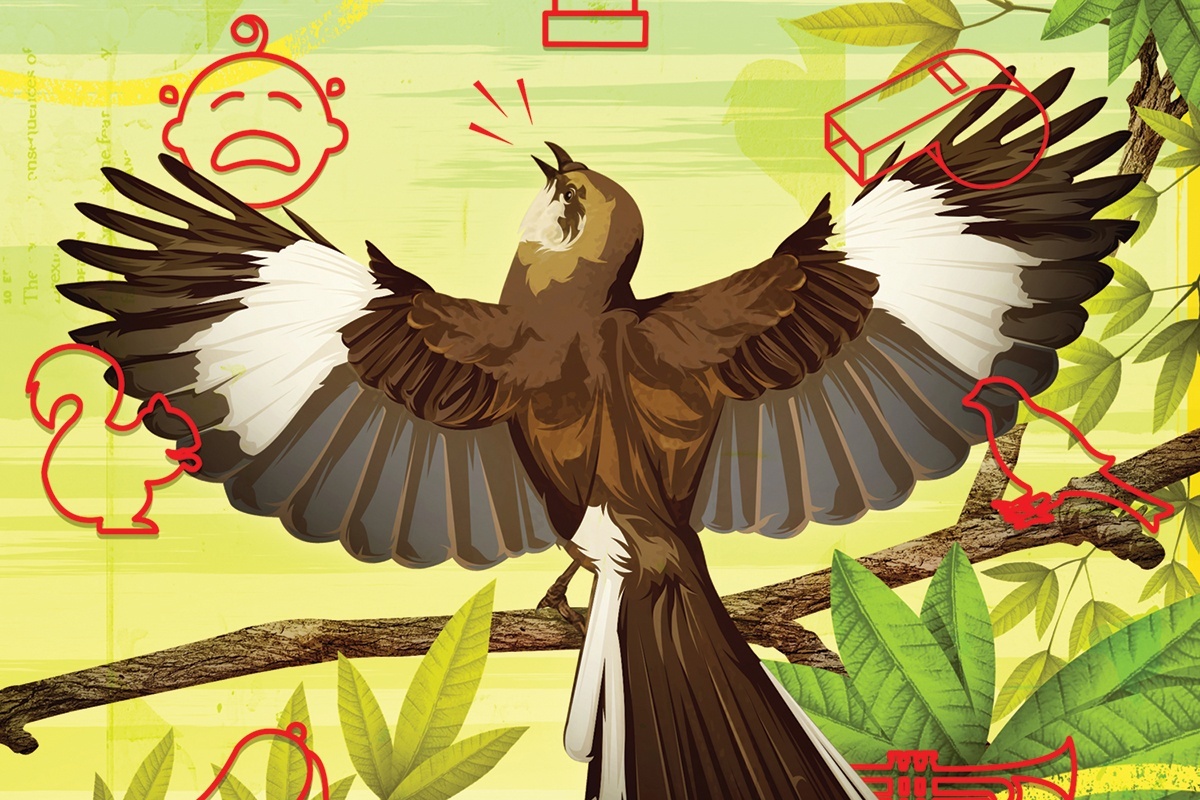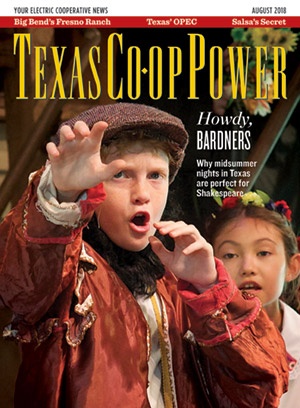The northern mockingbird, the state bird of Texas, is an avian chatterbox that serenades Texans all over the state at all hours of the day and sometimes night, most exuberantly from early spring through summer. The mockingbird’s scientific name is Mimus polyglottos, or “many-tongued mimic.”
Though they have long preferred southern climes, mockingbirds (also the state bird of Arkansas, Florida, Mississippi and Tennessee) have extended their range in recent years and sing as far north and east as New England and as far west as Northern California. Males and females perform their concerts in typical avian settings, singing for hours on end with scarcely a pause, raising and lowering their wings, and fluttering up a few feet in the air and settling back down.
As suggested by their name, the prevailing notion is that mockingbirds’ exhaustive repertoire is a product of mimicry, not originality. Their alleged replications include not only other birdsongs but also car alarms, whistles, sirens, bells, flutes, trumpets, crickets, squirrels and just about anything else that makes a noise. They’re nature’s ultimate cover band—prolific but derivative.
Or are they? Texas naturalist Roy Bedichek expressed an unabashed and lifelong fondness for mockingbirds, but he balked at the notion of the mockingbird as a mocker.
“If one wants to call a single note, or a phrase uttered here and there entirely out of context, the imitation of a song—that is, if he doesn’t care how loosely he uses the word ‘imitation’—he may say the mocker imitates,” Bedichek wrote in his 1947 book, Adventures With a Texas Naturalist. “But when I hear it said that he can fool anybody, I dissent. I have never been fooled more than momentarily by the so-called mimicry of the mockingbird.”
Well, maybe he was. At least a little bit. Bedichek’s belief is only partly true because the mockingbird definitely mocks—it just does not mock all the time. Research led by Dave Gammon at Elon University in North Carolina found that up to half of the mockingbird’s song is mimicry. The rest is original material, qualifying our state bird as a prolific songwriter as well as an inexhaustible performer.
As to why they sing so many songs, ornithologist Kim Derrickson, who has analyzed sonograms of mockingbird songs, told a writer for National Wildlife magazine in 1992 that mockingbirds’ concerts coincide with hormonal changes they need for mating and nesting in the spring and summer.
“If you followed a bird for an entire mating season, you would end up with more than 400 song types,” he said. “There is no point at which their repertoire flattens out. They just keep adding. Some they will forget or not use. Others they will remember into the next breeding season.”
Derrickson once recorded a mockingbird that mastered not only the call of a male red-winged blackbird but also the paired response of a female red-wing, inspiring the mockingbird to perform a duet with itself.
Another longtime mockingbird observer, University of Texas professor Robin W. Doughty, noted in his 1988 book, The Mockingbird, that the mimicry of other birds increases in the northern portion of their range. He offers the possible explanation that as mockingbird density decreases, “the opportunity to hear and learn from other birds also decreases, so that individuals are forced to copy the notes of other species.”
Doughty explains that the male mockingbird’s exhaustive playlist tells female mockingbirds he’s been around long enough to learn all these songs, and, if the female sticks with him, she and the babies will be fine. It’s also a warning to other male mockingbirds that the territory is occupied and intruders best move along.
Anyone who’s come too close to a mockingbird’s nest and been dive-bombed or pecked on the noggin by the original angry birds knows that mockingbirds also are birds of action. Cats and dogs often are the target of pre-emptive strikes from distrustful mockers, but mockingbirds take on all comers, including much larger birds of prey such as caracaras.
While Bedichek may have been half right or half wrong in his opinion that the mockingbird doesn’t actually mock, he was spot on when he said that mockingbirds “have qualities we admire and talk about.”
The Texas legislators who voted to adopt the mockingbird as the state bird in 1927 felt the same way, proclaiming it the most appropriate state bird “as it is found in all parts of the state, in winter and in summer, in the city and in the country, on the prairie and in the woods and hills, and is a singer of distinctive type, a fighter for the protection of his home, falling, if need be, in its defense, like any true Texan.”
Clay Coppedge, a member of Bartlett EC, lives near Walburg.


